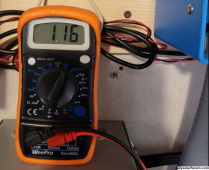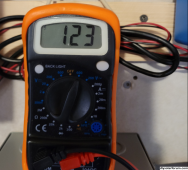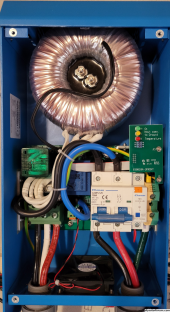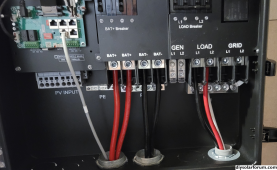Victron Auto Transformer:


The black leg was a solid 116, The red leg was on the edge varied between 123 and 124 depending on the load. Input was a pretty solid 240. So probably more like 7.5v variance It seemed to be working fine, load variances between the legs were minimal but even when they were not, I didn't seem to affect the readings. Had the 5x5K inverters not completely fallen over (as in all 5 turned completely off requiring a full disconnect/reset to come back on). I would have grudgingly run with it.

With 2AWG, the breaker kept popping off the DIN rail until I got happy with the Kleins. Ditto for the ground, probably should have run #6. I fudged in 1" conduit, 2AWG really needs 1-1/4 as a minimum. The openings didn't like the 1" very much, they provided a cable gland, that was even tighter for 3x2AWG. Yes the Victron engineering here can only be described as stunning!
Contrast this running 2/0 and 2AWG to the inside of the EG4 cabinet:

I thought I'd died and gone to heaven. So with Victron you will get more mature software, though it will be a b*tch to wire, and less capable, but at least you will get to pay more for it.
I will say Victron seems to be very popular in the mobile arena, like boats and RV's. In this particular application smaller size and robust software, with people singing the praises of their reliability, might be a huge factor, for components that need to be strategically scattered in annoying and difficult to service locations. Just not so sure it matters for ground based / home use in a utility area.
I might note:
I haven't seen a Victron representative respond to any of this on this forum either.
I have seen Sol-Ark, Lux, EG4, . . . Which is more support than I ever got from Victron. No matter, do what you think best, but it is HIGHLY UNKLIKELY I would ever consider a Victron product after my experience.






